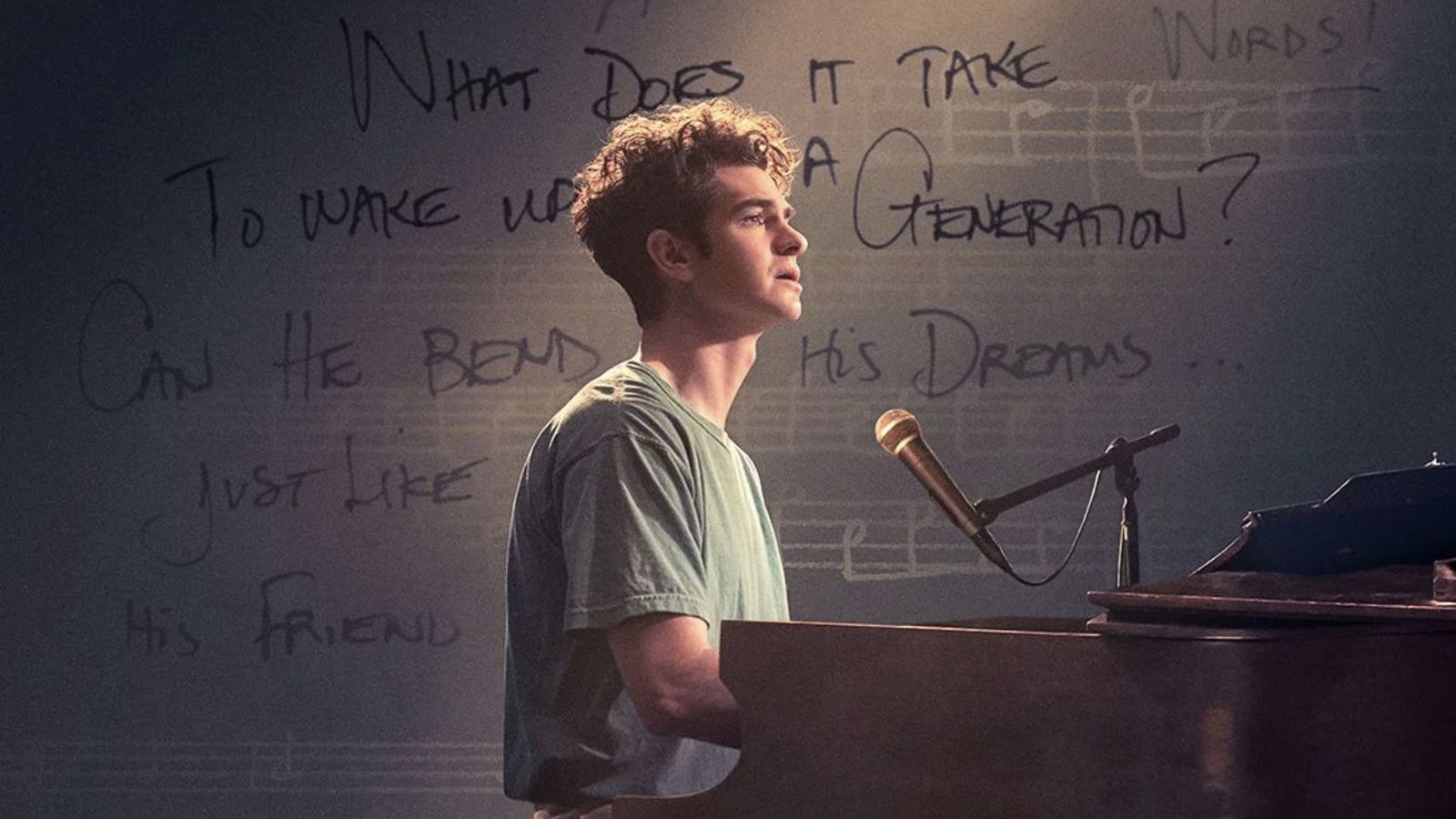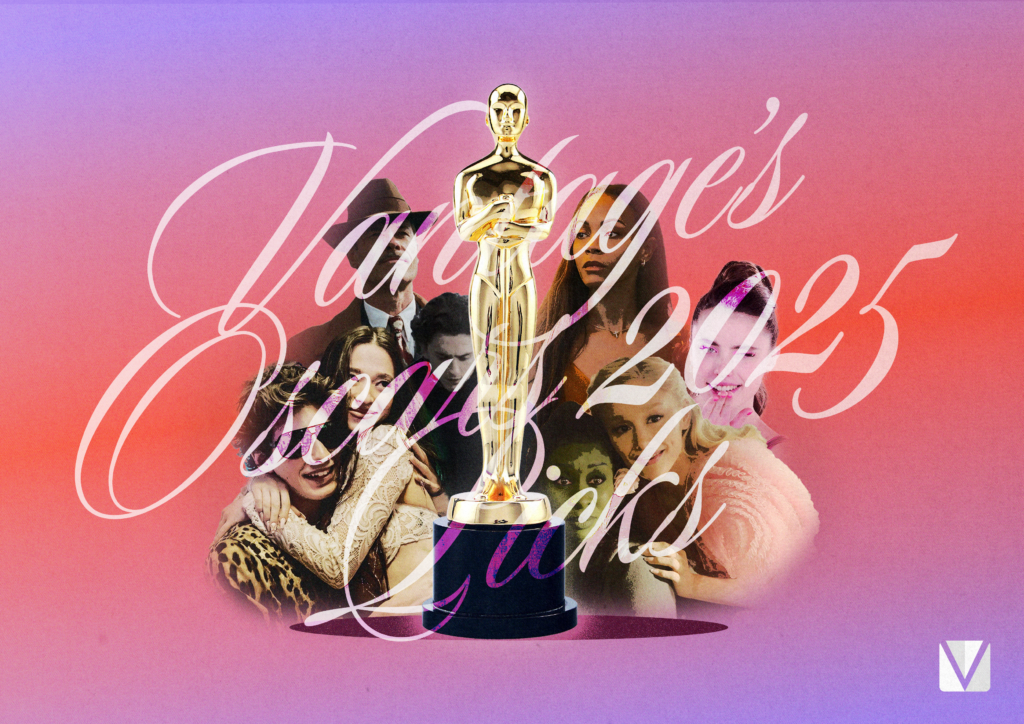“I’m the future of musical theatre,” composer Jonathan Larson (Andrew Garfield) declares. Following his posthumous success with Rent, he proved himself right after all.
The real Jonathan Larson was a visionary. He saw and heard musical theatre—the way it could shape the future and change lives—like no one else did. Upon hearing Larson’s signature contemporary rock sound, one can already tell that they’re in for a ride.
Based on his one-man “rock monologue”, Tick, Tick… BOOM! (directed by Lin Manuel Miranda) follows the true story of the late composer during his days as a struggling artist in New York City. The story focuses on Larson’s eight-year journey trying to put up his original musical while also stressing over his fast-approaching 30th birthday.
The stakes are immediately set in the energetic opening number, “30/90.” Jon—as Larson is fondly nicknamed in the film—and his backup singers Karessa (Vanessa Hudgens) and Roger (Joshua Henry) belt out: “Turn 30, 1990 / Bang, you’re dead! What can you do?”
As his show approaches its first workshop, he finds less and less time for his personal relationships and consequently pushes them into the back seat. With the help of the people around him, including his best friend Michael (Robin de Jesus) and girlfriend Susan (Alexandra Shipp), Jon learns to realign his priorities in life.
With an intense true-to-life story like this, Garfield sealed the deal as its leading man. Each of his performances as Jon were full of heart and authenticity, gripping the audience effortlessly into the inner workings of Larson’s mind.
In true Larson fashion, of course, the aforementioned inner workings consist of mostly musical numbers. The snarky Jon and Karessa duet “Therapy” is one of the standouts, bringing buoyancy to the lover’s quarrel he and Susan were having in the parallel timeline. Though both were seated, Garfield and Hudgens’ performance was one of the most memorable numbers for being choreographed down to the dilation of their pupils.
Additionally, the fantastical “Sunday’” diner number was a wonderful scene that paid homage to the recently departed Stephen Sondheim–inarguably the greatest and most influential musical theatre composer. Larson looked up to him as his biggest writing inspiration; he used “Sunday” from Sondheim’s Pulitzer-winning show Sunday in the Park with George as the basis for his own composition. The Moondance Diner ensemble in this number is filled with Broadway cameos—one of which includes Bernadette Peters, an original cast member of Sondheim’s Sunday in the Park with George (the show Larson based the song on).
On top of the numerous cameos, one more important person also made a small appearance in the film: Sondheim himself.
His final film cameo comes in the form of an inspiring voice message on Jon’s speakerphone. He compliments Jon shortly after the workshop, saying that “It’s first-rate work and has a future—and so do you.” Following Sondheim’s death, that voice message has become even more impactful, capturing the influence he had; not just on Larson, but for artists, performers, and writers everywhere.
While the riveting performances supported the emotional true-to-life narrative, the technicalities were unfortunately what weakened the film. The editing was lackluster at best; out-of-place images and redundant flashback footage showed little intention behind why specific shots were in their places. For instance, Garfield’s raw performance of “Why”—a song dedicated to Michael—was intermittently interrupted by flashbacks or home video footage from their childhood. Although it was an obvious effort to make the scene more sentimental in context to their relationship, it only lessened opportunities to connect with Garfield’s performance.
Furthermore, the green screen backgrounds also caused a couple of scenes to look too synthetic. The buildings outside Michael’s new apartment in “No More” appeared merely as a faded backdrop, and the rooftop horizon in Shipp’s share of “Come to Your Senses” looked way too polished to be real. The weak CGI of these exterior shots made it obvious that most of the film was being shot in a studio, thus effectively hurting its authenticity.
Above it all, the film serves as a sentimental tribute to Larson and his contributions in the musical theatre industry. The idea of the ticking time bomb becomes even more poignant knowing that he passed away at such a young age. In the finale of the film, “Louder Than Words” captures this poignancy best as Jon urges others to make marks of their own while they still can: “What does it take to wake up a generation? How can you make someone take off and fly?”
The line undoubtedly struck a chord with Miranda, who considers Larson one of his greatest musical theatre influences. Miranda made it evident that his vision for the project was primarily to honor Larson and his work. While this was reflected, the film fell far from flawless. As a tribute, however, it surely hit the right notes.
Tick, Tick… BOOM! successfully tugs heartstrings with its timeless narrative about passion and struggle. On top of it all, beware that Larson’s music is likely to get you headbanging in one scene and tearing up in the next. With moving and theatrical performances, it’s hard to turn away from a story that is told with so much love and truth.






